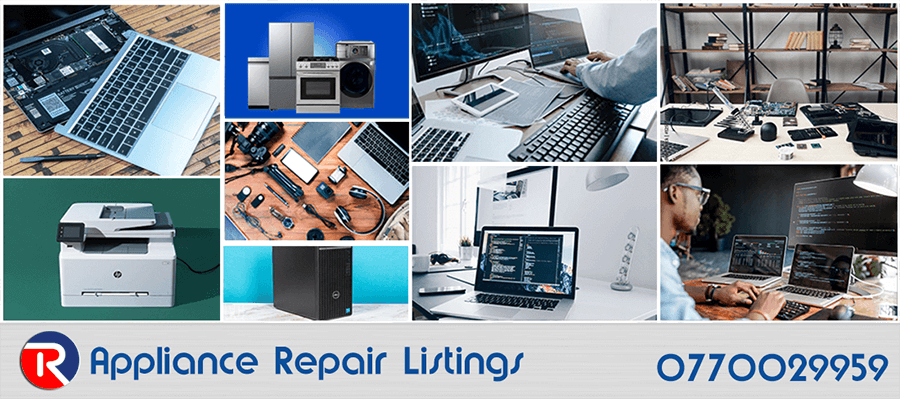
What to Do When Your Laptop Battery Drains Too Fast
By Repair.co.ke
A laptop with a rapidly draining battery can significantly hinder productivity, whether you’re working remotely, studying, or simply browsing. Understanding the causes of excessive battery drain and implementing practical solutions can extend your device’s battery life and enhance its performance. This article explores common reasons for fast battery drainage and provides actionable steps to address the issue effectively.
Understanding the Causes of Battery Drain
Laptop batteries degrade naturally over time due to repeated charge cycles, typically lasting two to four years depending on usage and maintenance. However, several other factors can accelerate battery drain:
- High Screen Brightness: Displays consume significant power, especially at maximum brightness.
- Background Processes and Applications: Resource-intensive programs, such as video editing software or games, can quickly deplete the battery.
- Connectivity Features: Constant use of Wi-Fi, Bluetooth, or external peripherals increases power consumption.
- Outdated Software or Drivers: Inefficient software or outdated battery drivers may prevent optimal power management.
- Battery Health: Aging batteries lose capacity, reducing their ability to hold a charge.
- Environmental Factors: Extreme temperatures, particularly heat, can negatively affect battery performance.
By identifying the specific cause, you can take targeted steps to mitigate excessive battery drain.
Practical Steps to Extend Laptop Battery Life
1. Adjust Power Settings
Most operating systems offer power-saving modes to optimize battery usage. On Windows, navigate to the Control Panel, select “Power Options,” and choose the “Power Saver” plan. On macOS, go to System Settings, select “Energy Saver,” and adjust settings to reduce energy consumption. Lowering screen brightness and setting the display to sleep after a short period of inactivity can also conserve power significantly.
2. Manage Background Applications
Close unnecessary programs running in the background. On Windows, use Task Manager (Ctrl+Shift+Esc) to identify and terminate resource-heavy applications. On macOS, Activity Monitor provides similar functionality. Disable startup programs that launch automatically, as they can consume power even when not in use.
3. Optimize Connectivity
Turn off Wi-Fi and Bluetooth when not needed, as these features actively search for connections, draining the battery. Disconnect external devices like USB drives or external mice when not in use. If you’re working offline, enable “Airplane Mode” to disable all wireless communications.
4. Update Software and Drivers
Ensure your operating system and drivers are up to date, as manufacturers often release updates to improve power efficiency. Check for firmware updates for your laptop’s battery management system through the manufacturer’s website. Keeping applications updated also prevents compatibility issues that may lead to excessive power consumption.
5. Monitor Battery Health
Most laptops provide built-in tools to assess battery health. On Windows, you can generate a battery report by opening Command Prompt and typing powercfg /batteryreport. On macOS, hold the Option key, click the Apple menu, and select “System Information” to view battery health. If the battery capacity is significantly reduced (e.g., below 80% of its original capacity), consider replacing it.
6. Adjust Usage Habits
Limit resource-intensive tasks, such as gaming or video streaming, when running on battery power. Use lightweight applications for tasks like note-taking or document editing. Additionally, avoid charging your laptop in extreme temperatures, as this can degrade the battery faster.
7. Calibrate the Battery
Occasionally, the battery’s charge indicator may become inaccurate, leading to improper power management. To calibrate, fully charge the battery, then discharge it completely by using the laptop until it shuts down. Recharge it to 100% without interruption. Perform this process every few months to maintain accuracy.
When to Seek Professional Help
If the above steps do not resolve the issue, the problem may lie with the battery or internal hardware. A professional diagnostic can identify issues like a faulty battery, power management system errors, or motherboard issues. At Repair.co.ke, we specialize in laptop diagnostics and battery replacements, using genuine parts to ensure optimal performance. Contact a certified technician if you notice symptoms like sudden shutdowns, overheating, or a battery that no longer holds a charge.
Preventive Maintenance for Long-Term Battery Health
To prevent future battery drain issues, adopt these habits:
- Avoid letting the battery drop to 0% frequently; aim to keep it between 20% and 80%.
- Store the laptop in a cool, dry environment to minimize battery degradation.
- Clean the laptop’s vents and fans regularly to prevent overheating, which can strain the battery.
- Use the original charger or a manufacturer-approved replacement to ensure proper voltage and compatibility.
A fast-draining laptop battery can be frustrating, but with the right approach, you can significantly extend its lifespan and improve efficiency. By optimizing settings, managing applications, and maintaining battery health, you can enjoy longer usage times without constant recharging. For persistent issues, professional assistance from Repair.co.ke can restore your laptop’s performance. Implement these strategies today to keep your device powered and productive.